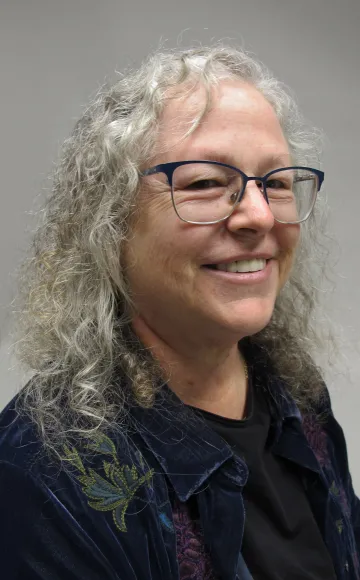26 Years In, Arizona State Museum Conservator Reflects on a Lifetime of Preserving Cultural Heritage
Marilen Pool, senior project conservator at the University of Arizona’s Arizona State Museum, has led an extensive career of research in both public and private sectors. Her love for conservation propels her work of preserving cultural artifacts.

ASM researcher, Marilen Pool, conserving a Tongan barkcloth by repairing tears in the fiber using Japanese paper and wheat starch paste.
“I will continue to be a conservator until my eyes go blind and my hands stop working,” said Marilen Pool, a senior project conservator at the University of Arizona’s Arizona State Museum (ASM). Through years of dedication and careful research, she has mastered her field and found great satisfaction.
Pool has worked in museums since she was 19 years old—first as a curator and director before being trained in conservation in her early 30s. She has been with ASM since 1997. Since then, she has seen four different museum directors, an expansion of the conservation staff, and a streamlining of the museum work process.

Marilen Pool, senior project conservator at the Arizona State Museum
Pool has seen a complete transformation of the conservation field since she started working in museums. “Early museum preservation efforts focused on integrating modern materials into archaeological and historical artifacts to reestablish their original appearance.” Pool said, “Conservators today are primarily concerned with the long-term preservation of artifacts in their current condition.”
As the museum changed, so did Pool. “I have been forced to become incredibly efficient,” she said. “I like to compare my work to the medical field in that there are constant evolutions and new information that people like me have to learn. I have had to grow and change with the museum in order to keep up.”
Pool is currently part-time and working on a project funded by one of ASM’s recent grants. The project, funded by a grant from the Institute of Museums and Library Services as part of their Museums for America program, involves conserving a collection of Polynesian barkcloth, also known as tapa, some of which were collected by Tucsonan veterans who fought in the Pacific Theatre of World War II.
Polynesian barkcloths are traditional textiles made from the inner bark of certain trees, primarily the paper mulberry tree. The bark is beaten into thin sheets, which are then decorated with intricate patterns and designs. The barkcloth is of high scholarly significance and interest to museum researchers and the public.
“Without the preservation of material culture, you lose a lot of history,” Pool said. “Historians study documentary material, but understanding how and why these artifacts were used provides another layer of learning that would otherwise be lost.”
Over a period of 18 months, the museum has been tasked with documenting, stabilizing, rehousing, and moving the cloths into new storage.

Barkcloth conserved at ASM from the island of Wallis & Futuna in French Polynesia. The cloth was collected by Marine Lieutenant General Frederick B. Price in 1944
Pool also runs a private practice of her own, “Sonoran Art Conservation Services,” where she has been contracted by institutions including the Tucson Museum of Art, The Phoenix Art Museum, and the Smithsonian Institution. In addition to her work as a conservator, she has recently received a doctorate degree from the U of A in Arid Lands Resource Sciences.
Pool was initially drawn to museum conservation for its fusion of material culture and hands-on research that blends art and science. “With handmade art, you get to know the characteristics of the artist, you get to experience a really intimate human connection hundreds of years apart,” she said.
Her exploration into new research areas, coupled with a passion for education and her craft, has made Pool an invaluable member of the ASM staff and the U of A campus community at large.

